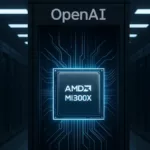Five years ago the market was abuzz with talk of cheap netbooks based on Intel’s Atom processors and AMD’s upcoming low-end APUs. Then Steve Jobs took to the stage with the first iPad in tow and the rest is history – netbooks died out faster than any PC form factor in recent history.
However, the basic concept never really went away. Although Intel lost interest in doing cheap netbooks and ultraportables (if it ever had any interest to begin with), AMD stepped up with a couple of cheap APUs. Intel netbooks were killed off, but slightly bigger 11.6-designs are still around, based on AMD and Intel silicon. Google also joined the fun with Chromebooks and they are taking off slowly.
Netbooks weren’t a bad idea, but neither Intel nor Microsoft seemed too interested in actually coming up with good platforms. There were too many hardware limitations and netbooks never offered anything really new or revolutionary – they were just small, underpowered notebooks.
Now we’re seeing an interesting trend. Redmond botched the Windows RT rollout and Windows 8 never caught on as a tablet OS. Intel on the other hand is rolling out new Bay Trail chips, with a lot more muscle than Atoms of yesteryear, but with much higher efficiency. Intel is now talking up 2-in-1 designs and other form factors that practically look like the natural extension of netbook evolution.
Asus recently launched a Windows 8.1 tablet with a keyboard dock for just $349. It’s the first such machine – a Windows 8.1 tablet on the cheap, with a proper keyboard to boot, but it’s by no means the last one. New designs from big PC players are on the way and they are bound to be cheap. Several companies have already rolled out 8-inch Windows 8.1 tablets and $299 seems to be the sweet spot, so these hybrid designs should end up priced anywhere from $349 to $449 – cheaper than an iPad, but more expensive than cheap Android tablets.
Chromebooks are an interesting development, too. Although they lack the x86 legacy appeal of cheap Bay Trail gear, they appear to be selling quite well. Acer, HP and Samsung already have a few designs each and they are going for $249 to $399 – somewhat cheaper than what a full size Bay Trail tablet should cost. Lenovo recently launched the IdeaPad 10, a cheap Android netbook, although we’re not sure it has much mainstream appeal. Gateway launched a 10.1-inch Windows 8 netbook for $329 and the new Asus F102 is also a 10-inch netbook with a €299 price tag, with an AMD APU running the show.
So what’s going on here?
Well, touchscreens are dirt cheap and so are 10-inch panels, yet Windows 8.1 is becoming a viable OS for cheap ultraportables and tablets, thanks to Intel’s Bay Trail and AMD Jaguar parts. Although netbooks are dead, quasi-netbooks are starting to make sense again, especially for players who did not roll out Chromebooks of their own. Convertible tablets like the Asus T100TA seem to offer the best of both worlds – an ultraportable Windows 8.1 notebook that’s also a tablet on the cheap. It all makes us wonder what would have been had Intel and Microsoft taken netbooks seriously five years ago.

This article first appeared on TechEye and is posted here by consent.






